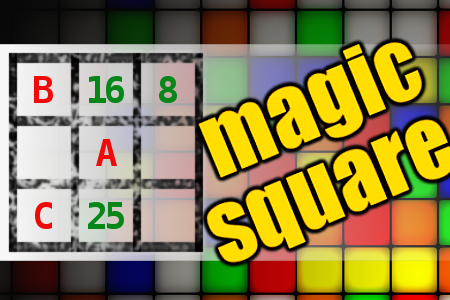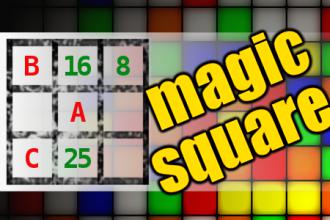MAGIC SQUARE: Calculate A-B+C
The aim is to place the some numbers from the list (7, 8, 10, 11, 14, 16, 17, 25, 27, 28) into the empty squares and squares marked with A, B an C. Sum of each row and column should be equal. All the numbers of the magic square must be different. Find values for A, B, and C. Solution is A-B+C.Correct answers: 20
The first user who solved this task is Djordje Timotijevic.
#brainteasers #math #magicsquare


